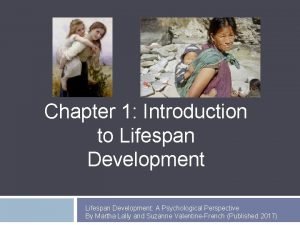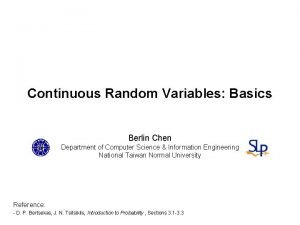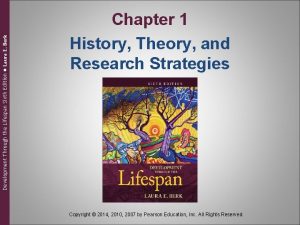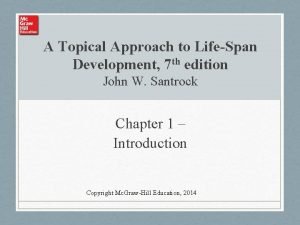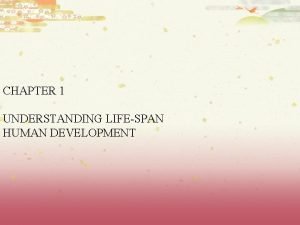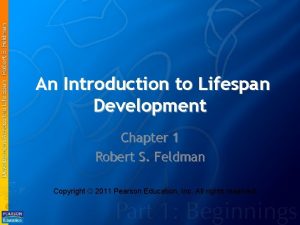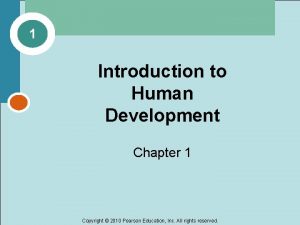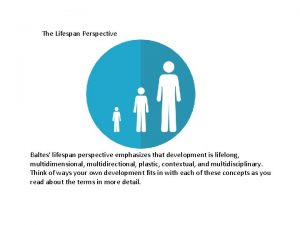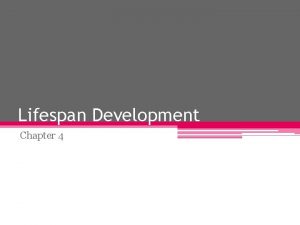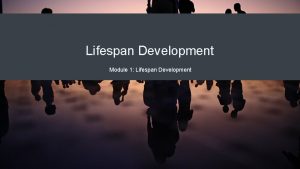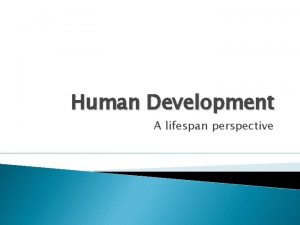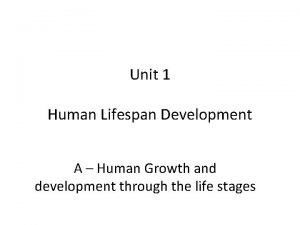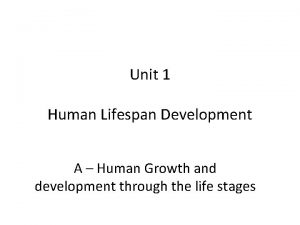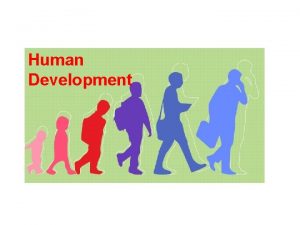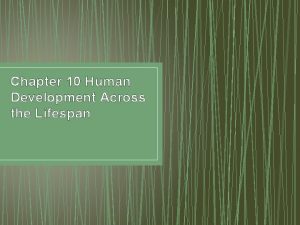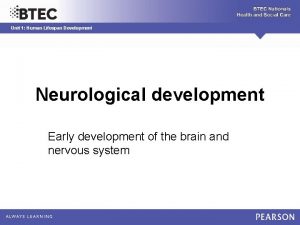Human development Introduction ChiWen Chen The LifeSpan Perspective



















- Slides: 19

Human development Introduction Chi-Wen Chen

The Life-Span Perspective

• What Is Life-Span Development? – A pattern of change involving growth and decline, beginning at conception and lasting until death. – Life phases: infancy, childhood, adolescence, young adulthood, middle adulthood, and late adulthood.

Average Human Life Expectancy (in Years) at Birth, from Prehistoric to Contemporary Times


• Socioemotional – changes in relationships, emotions, and personality. • In many instances, biological, cognitive, and socioemotional processes are bidirectional because each can affect the other.

Developmental Changes Are a Result of Biological, Cognitive, and Socioemotional Processes Biological processes Cognitive processes Figure 1. 6 Socioemotional processes


What you concern most?



• Conceptions of age: – Perhaps we are becoming an age-irrelevant society. – How should age be conceptualized? • Chronological age. • Biological age. • Psychological age. • Social age. – How old would you be if you didn’t know how old you were?

Chronological age Number of years since birth Biological age Conceptions of age Age in terms of physical health Psychological age Adaptive capacity compared with others of the same chronological age Social roles and expectations relative to chronological age Figure 1. 10


Developmental Issues


• Nature versus nurture: – A debate about whether development is influenced most by biological heredity or environmental experiences. – Nature proponents argue that genetic blueprints produce commonalities in growth and development. – Nature proponents acknowledge the influence of extreme environments on development. – Psychologists emphasize the importance of nurture and that the range of environments can be vast.

• Stability and change: – The assumption that nothing much changes in adulthood. – The concept of plasticity, ongoing change. – Major changes were believed to occur only in the first 5 years of childhood (early experience doctrine); we are no longer able to ignore the rest of the life span. – There is still a lot of controversy over both sides of this issue.

• Continuity and discontinuity: – The continuity–discontinuity issue focuses on whether development is • A gradual, cumulative quantitative change process or • A set of distinct stages that are qualitatively different from each other
 Lifespan development a psychological perspective
Lifespan development a psychological perspective Physical development
Physical development Chen chen berlin
Chen chen berlin Development through the lifespan 6th edition
Development through the lifespan 6th edition Openstax
Openstax A topical approach to lifespan development
A topical approach to lifespan development Guidance counselling and lifespan development
Guidance counselling and lifespan development Lifespan development third edition
Lifespan development third edition Lifespan development third edition
Lifespan development third edition Exploring lifespan development chapter 1
Exploring lifespan development chapter 1 Exploring lifespan development chapter 1
Exploring lifespan development chapter 1 Chapter 8 human needs and human development
Chapter 8 human needs and human development Chapter 8 human needs and human development
Chapter 8 human needs and human development Gni definition ap human geography
Gni definition ap human geography How to draw stairs in 2 point perspective
How to draw stairs in 2 point perspective Silo perspective vs business process perspective
Silo perspective vs business process perspective Nature of human development
Nature of human development Number of stages
Number of stages Pelican eel habitat
Pelican eel habitat How to display petit fours
How to display petit fours
